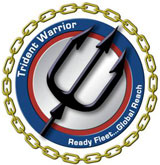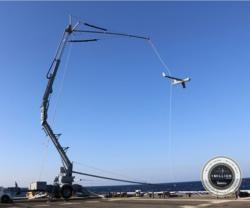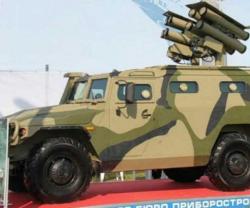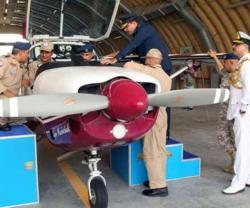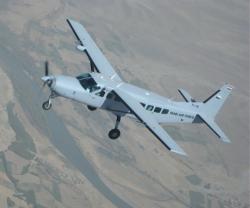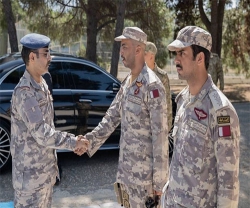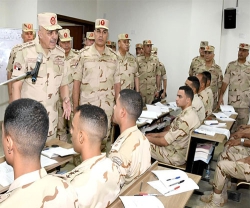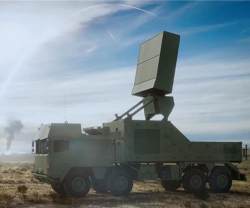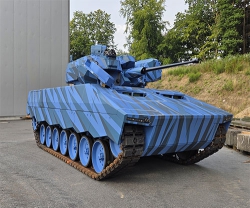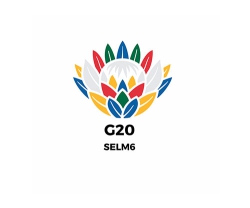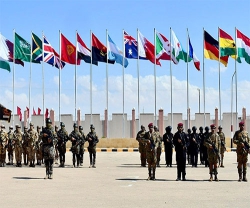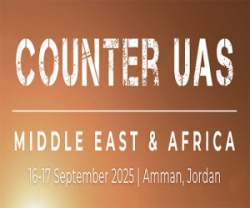General Atomics’ Participation in Trident Warrior 2011
06.10.2011 North America
General Atomics Aeronautical Systems, Inc. (GA ASI), a leading manufacturer of Unmanned Aircraft Systems (UAS), tactical reconnaissance radars, and electro-optic surveillance systems, announced its successful participation in the recent U.S. Navy Experiment Trident Warrior 2011 (TW11) off the coast of Virginia Beach, Virginia (25-29 July 2011).
Employing ships, aircraft, and land vehicles, TW11 is the Navy's primary FORCEnet Sea Trial experiment series designed to evaluate emerging technologies and network-centric toolsets to enhance situational awareness for decision-makers across all levels of the naval chain of command.
During its participation, GA-ASI operated a Predator B(r) UAS surrogate, a King Air aircraft, equipped with Predator B-type sensors and configured for maritime surveillance in support of fleet and homeland security objectives. GA-ASI's Predator B surrogate performed a variety of overland and maritime Intelligence, Surveillance, and Reconnaissance (ISR) missions in the littoral environment that included surface vessel detection using the Lynx(r) Multi-mode Radar, and Full-Motion Video (FMV) from a FLIR 380HD imaging system to discern vessel intent.
"Our primary objective was to provide real-time situational awareness by disseminating radar and EO/IR [Electro-Optical Infrared] data to Navy land-based and at-sea command and control [C2] nodes," said Linden Blue, president, Reconnaissance Systems Group, GA-ASI. "The missions were executed with success, demonstrating the ability to detect, classify, and identify targets in various weather conditions in support of FAC (Fast Attack Craft), FIAC (Fast Inshore Attack Craft), MIO (Maritime Interdiction Operations), and land convoy operations."
To support TW11, GA-ASI integrated a surrogate UAS platform (King Air 200) equipped with EO/IR, a Lynx Multi-mode Radar with Maritime Wide Area Search (MWAS) mode, and a Tactical Common Data Link (TCDL) data link system into the Navy's C2 architecture. Flights originated from NAS Oceana and data was disseminated to the USS Vicksburg (CG 69) and the Combat Direction Systems Activity (CDSA) facility at Dam Neck. The Synthetic Aperture Radar/Ground Moving Target Indicator (SAR/GMTI) and FMV sensors were key to development of TW11's overall tactical picture, demonstrating the versatility of the UAS in both littoral and overland surveillance missions.
GA-ASI achieved several "firsts" in TW11, such as sending ISR data directly to the USS Vicksburg (equipped with a prototype Intelligence Carry-On Program (ICOP) antenna), the Navy Video Targeting System (NVTS), and the Office of Naval Intelligence (ONI) for target analysis.
Employing ships, aircraft, and land vehicles, TW11 is the Navy's primary FORCEnet Sea Trial experiment series designed to evaluate emerging technologies and network-centric toolsets to enhance situational awareness for decision-makers across all levels of the naval chain of command.
During its participation, GA-ASI operated a Predator B(r) UAS surrogate, a King Air aircraft, equipped with Predator B-type sensors and configured for maritime surveillance in support of fleet and homeland security objectives. GA-ASI's Predator B surrogate performed a variety of overland and maritime Intelligence, Surveillance, and Reconnaissance (ISR) missions in the littoral environment that included surface vessel detection using the Lynx(r) Multi-mode Radar, and Full-Motion Video (FMV) from a FLIR 380HD imaging system to discern vessel intent.
"Our primary objective was to provide real-time situational awareness by disseminating radar and EO/IR [Electro-Optical Infrared] data to Navy land-based and at-sea command and control [C2] nodes," said Linden Blue, president, Reconnaissance Systems Group, GA-ASI. "The missions were executed with success, demonstrating the ability to detect, classify, and identify targets in various weather conditions in support of FAC (Fast Attack Craft), FIAC (Fast Inshore Attack Craft), MIO (Maritime Interdiction Operations), and land convoy operations."
To support TW11, GA-ASI integrated a surrogate UAS platform (King Air 200) equipped with EO/IR, a Lynx Multi-mode Radar with Maritime Wide Area Search (MWAS) mode, and a Tactical Common Data Link (TCDL) data link system into the Navy's C2 architecture. Flights originated from NAS Oceana and data was disseminated to the USS Vicksburg (CG 69) and the Combat Direction Systems Activity (CDSA) facility at Dam Neck. The Synthetic Aperture Radar/Ground Moving Target Indicator (SAR/GMTI) and FMV sensors were key to development of TW11's overall tactical picture, demonstrating the versatility of the UAS in both littoral and overland surveillance missions.
GA-ASI achieved several "firsts" in TW11, such as sending ISR data directly to the USS Vicksburg (equipped with a prototype Intelligence Carry-On Program (ICOP) antenna), the Navy Video Targeting System (NVTS), and the Office of Naval Intelligence (ONI) for target analysis.
Previous Post9th C-5 Inducted For Modernization
Latest news
Latest events
DSEI 2025
09 - 12 Sep 2025Excel, London - United KingdomCounter UAS Middle East & Africa 2025
16 - 17 Sep 2025Amman - JordanIntersec Saudi Arabia
29 Sep - 01 Oct 2025Riyadh International Exhibition & Convention Centre - Saudi ArabiaDubai International Air Chiefs’ Conference (DIACC 2025)
16 Nov 2025Atlantis, The Palm Dubai - United Arab Emirates

